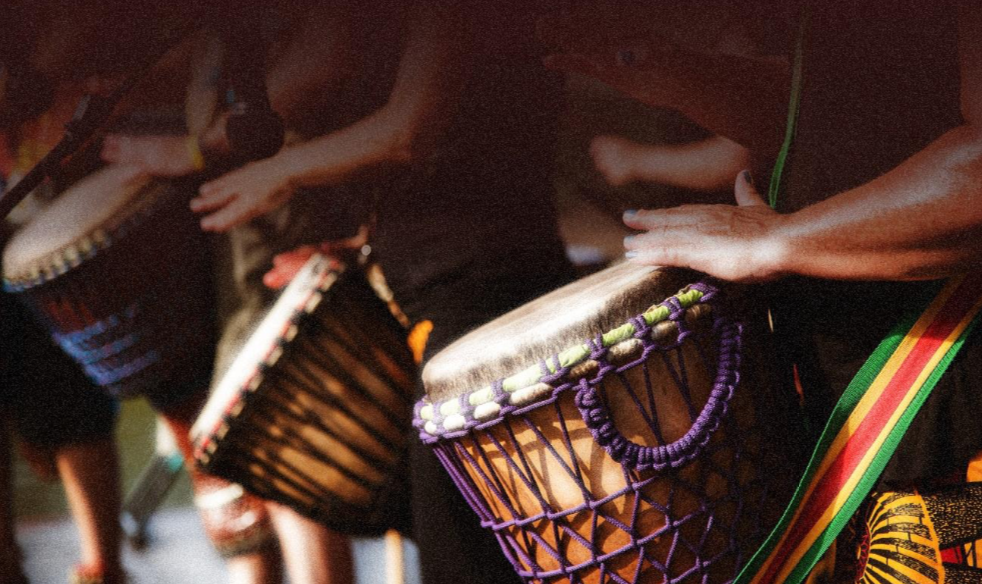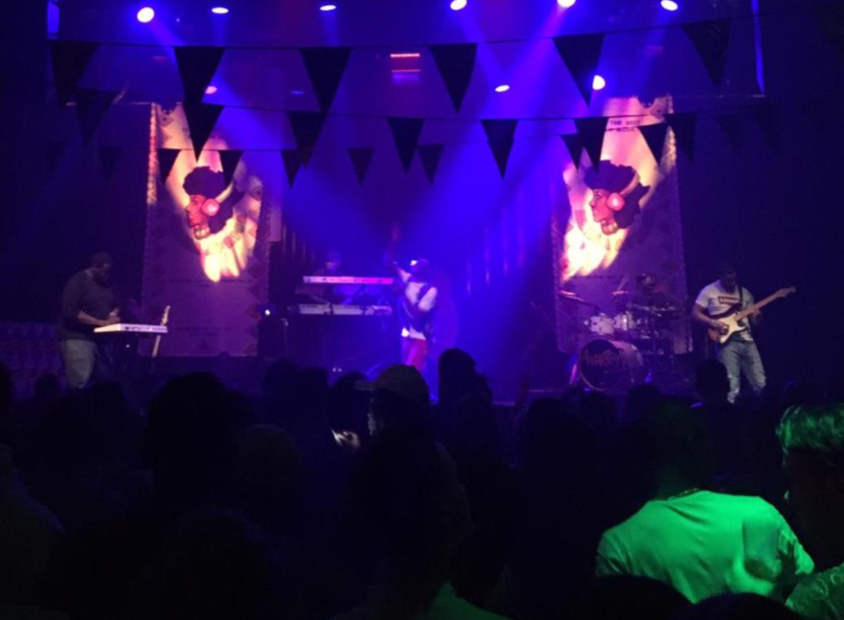
“Music is a great blessing.
It has the power to elevate and liberate us. It sets people free to dream.
It can unite us to sing with one voice. Such is the value of music.”
Nelson Mandela
Mama Africa and the Artists: Challenges and Evolution
Could you think about a life without the presence of music? Walking down the street, shopping in supermarkets, the birds in the morning, the neighbors’ radio… It is complicated to imagine our daily life in a silent mode. One could find melodies, chants, and sounds in every single corner of the world inhabited by humans. But beyond our experience as individuals, music is also a core aspect of ourselves as social beings. It represents a set of values and practices that connects us to the broader community, fulfilling our personal and collective senses of identity and belonging. African societies are not an exception in this regard, since music remains at the very core of peoples’ routines. Furthermore, music is also a powerful artistic expression, which can travel, transcend borders, and adapt to different contexts and purposes.
This project has the purpose of exploring these aspects of the African music present in the Dutch scene. It mainly focuses on how contemporary forms of African music are finding their place and voice on the scenarios of the Hague. At the early stages of the project, our objective was to approach the phenomenon from 4 different perspectives: the audience, the artists, the music content, and the performances’ setting. The methodology proposed is ethnographic in nature, making use of face-to-face interviews, participant observation and descriptions, and discourse analysis. However, due to the persistent difficulties we faced – especially regarding the access to the artists-, we were obliged to partially modify our plans. From our initial idea to interview traditional and modern African artists to our encounter with the DJ Philou Louzolo, we finally decided to reorient our research towards the event of Mama Africa. This party illustrates the latest trends of African music in the Hague, which incorporates a new way of experiencing and sharing music in the Hague. We considered it as an opportunity to broaden our research and consider other sources of information on the topic. We incorporated the organizer’s point of view and two different audiences’ perspectives – African and non-African -. The aim was, on the one hand, to discover what lies behind such initiative. On the other, we assessed how different kinds of public perceive the purposes of the event. Interviewing Mama Africa artists remained an essential part of the data-gathering process, but unfortunately, so did the difficulties of access. In addition, the possibilities were further limited by the few online sources of information available.
Therefore, my contribution to the project shifted from an initial idea of face-to-face interviews to multimethod research composed of virtual ethnographic and discourse analysis techniques. This process involved the examination of live performances, videos and videoclips, playlists, and music created by the artists, autobiographic texts, images, and different online social networks (Facebook, Instagram, and YouTube). The analysis of each of these elements constituted a different path to reach the artists selected.
Nevertheless, all of them relied upon virtual ethnographic methods, which were applied to investigate the artists’ self-portrayed images and patterns of interactions online. Similarly, such study required the application of discourse analysis techniques that could adapt to both audiovisual and written sources. In the case of Amartey, the Afropop singer, the primary source of information involved video clips and live performances, since there was quite scarce written content about his professional or personal trajectory. On the contrary, the Afrobeats DJ Shyrano had published an online autobiography, which facilitated my research on his musical influences and personal choices. However, it was quite difficult to find content on his actual work on stage. Finally, DJ Versano Laroz had shared to a greater extent audiovisual and autobiographical content of himself as an artist. Even so, in this case the challenge was to explore in a deeper level of analysis the connection of his music with the continent.
This new approach also required a reformulation of the research question in such a way that it could be answered with such available sources of information. The initial question of ‘How is the artist using his music to transmit his African heritage and transcend cultural boundaries?’ was designed to be answered by artists’ interviews; the definitive ‘What elements of African cultures are the Mama Africa artists representing on the stage?’ gave more room of maneuver for using different methods of analysis. From this latest point of departure, my research firstly explored the African tendencies and values present in the artists’ musical experience. Once identified, my investigation focused on those elements present in their music and/or the performances on stage, which could be regarded as distinctively African. This process went beyond the self-evident preference of musicians for African rhythms to the study of values and messages transmitted by their choices and online interactions. While Amartey portrays a vivid sense of community in his videos and live performances, Shyrano traces the foundations of his current professional and personal identity back to his African descent in terms of family and music influences. Versano, on the contrary, transmits a sense of openness and modernity that reminds us of the current processes of integration of many African societies into the globalizing world. I do agree with the fact that the questions and the subsequent findings are quite broad and vague. However, the impossibility of accessing direct sources of information – the artists -, in addition to the time pressure, hindered to a great extent a more in-depth analysis. Moreover, the rationale behind the latest choice is greatly related to my own field research. On the one hand, one similarity can be drawn regarding the approach, which in both cases consists of analyzing the impact of certain (abstract) values on the actual practice of the participants. On the other, both research projects make use of virtual ethnographic methods to study the online setting as an essential part of the participants’ reality.
The choice of the medium to show our findings was neither free of obstacles. Given the final multimethod research we had undertaken as a group, our project required a medium that adapted to the different perspectives and audiovisual content we had addressed and produced. Indeed, it is important to note that the investigation of audiovisual content also involved experiencing different video-editing programs. The objective was to edit the audiovisual content in such a way that it could briefly display the elements under investigation during the data-gathering process in a representative manner. Moreover, the medium had to be compatible with our final plans for the publication on the Innovative Research Methods (IRM) website. Such circumstances guided our preference for ‘Slices,’ but unfortunately, we were not allowed to create our project due to technical problems of their own website. The second and final option was the graphic-design tool ‘Canva,’ which provides a medium suitable for posting text, images, and videos online. Our findings are then gathered and displayed in this format, which is easily combined with our space on the IRM website.

Learning Outcomes
As mentioned above, this project has been undoubtedly challenging. It has required a lot of patience and flexibility to overcome the difficulties which appeared on the way. Indeed, the idea envisaged at the beginning underwent so many changes that the final project has turned up being a different one. As a researcher, I consider that this project has broadened my mind in terms of alternative ways to collect and process data relevant to the research. When the sources available might not be as accessible as planned, our creativity and invention are triggered in ways that might even surprise us. A good example is the use of virtual ethnographic or discourse-analysis methods to explore online audiovisual content. Such use of digital technologies has been a great discovery to me as an innovative way of gathering and archiving data and displaying knowledge. Regarding the latter, this project has provided me with the first contact with website tools such as Canva or Slices as a new way to share research findings with a broader public. In fact, I am considering to use them as the medium for future projects. Finally, the use of audiovisual content has also involved the management of different video-editing programs such as Shotcut, Windows Movie Maker, and Clipchamp. As the first programs did not work correctly on my computer, I had to find an alternative such as Clipchamp, which offers basic tools for editing music and video online.
Now I acknowledge the importance of bearing in mind that researching tasks depend upon numerous factors, which might change over the process and alter the final product in unexpected ways. Adapting to changing circumstances is extremely important if the objective is to reflect, analyze, and explore social realities that are dynamic by nature. What is more, these changes in the process often lead the researcher to unforeseen questions, which might address more consistently the concerns relevant in the field. I come to understand ‘serendipity’ as a natural element of conducting ethnographic research, which broadens the path to a more ‘human’ academic endeavor. This awareness can somehow release the researcher from too-centered ‘theoretical’ roadmap to reorient his/her priorities towards the needs of the reality under analysis.
The experience of working in a team with individual and collective aims has also been a great learning lesson. Understanding the others’ ways of working and by contrast, one’s own, while learning how to make them merge is quite a challenge, especially when things do not turn up as expected. Agreeing upon concepts and preferences guiding the research process requires openness and acknowledgment of our own bias. Indeed, finding a meeting point amongst the different perspectives is essential to learn from others’ experiences and continue growing. Moreover, this kind of situations further enhances our problem-solving abilities in a broader context, since the capacity for coping with uncertain situations remains extremely useful at the professional and personal levels. Therefore, I do agree with Rivoal and Salazar’s emphasis (2013) on the importance of serendipity, reflexivity and openness as core elements of the ethnographic practice. It is something to bear in mind during my research in the field.
Bibliography
Rivoal, Isabelle; Salazar, Noel B.2013. ‘Contemporary ethnographic practice and the value of serendipity,’ Social Anthropology, 21, 2, 178–185.

